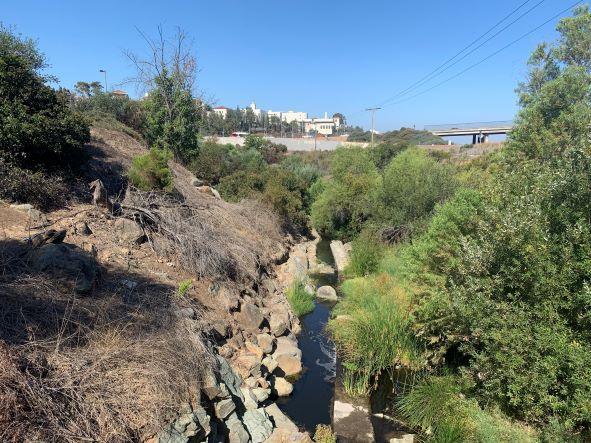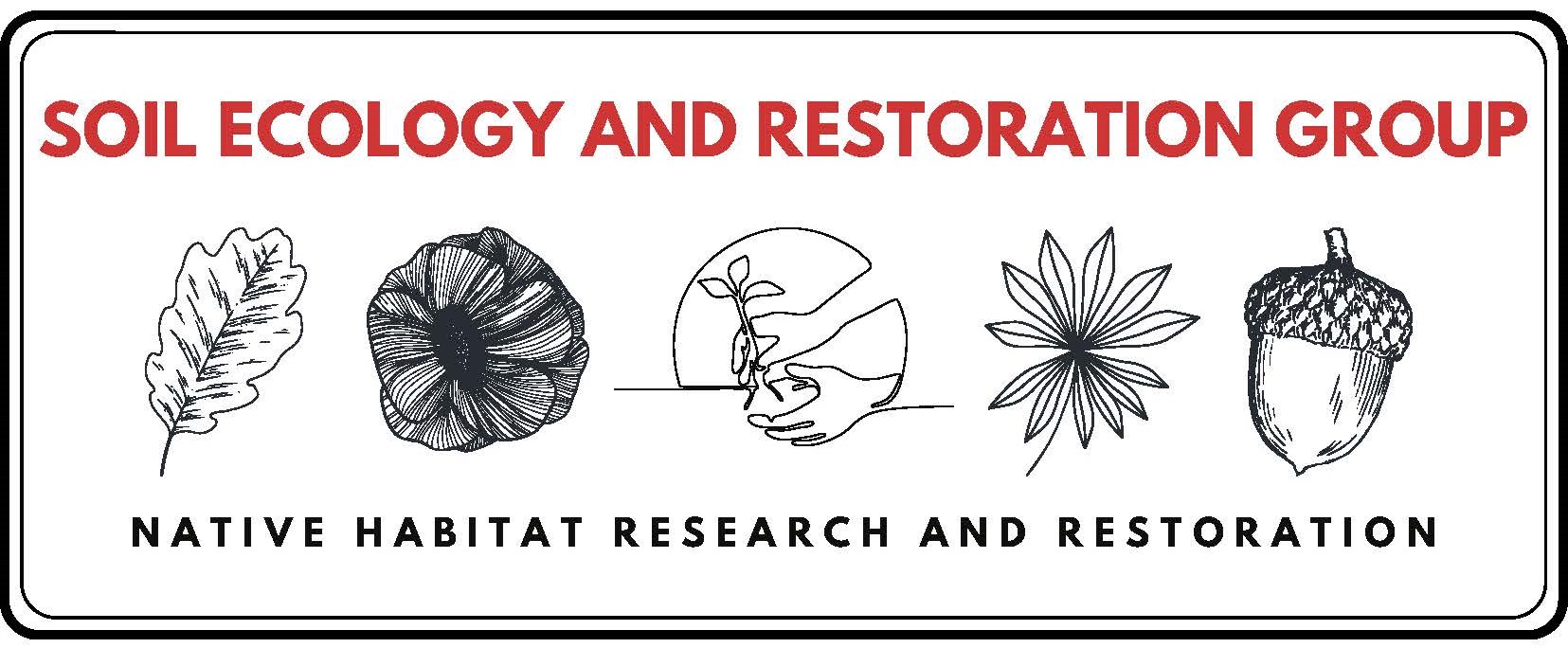
PROJECT OVERVIEW
INTRODUCTION
San Diego State University Research Foundation (SDSURF) proposes reduction of fire risk from non-native habitat in an urban environment through vegetation management and habitat restoration of fire-prone habitat. Primary project components include fuel load reduction: removal of non-native trees and giant reed stands and removal of piles of woody debris. The project area is located inside a “Very High Fire Risk Zone.” According to the WIFIRE project of the San Diego Supercomputer Center, only one historical fire burned in the project area. This 1944 fire burned over 6,000 acres of San Diego, including the San Diego State University (SDSU) campus and the adjacent canyons. More recently, in September 2019, a fire burned 2.5 acres on SDSU campus along Alvarado Creek, including part of the project area in Phase III (Map 1). The 2019 fire burned very hot in the area dominated by non-native vegetation (palm trees, pepper trees, grasses). However, the fire only singed native species in the area where non-natives had been removed from the creek bed under a previous restoration project funded by the San Diego River Conservancy’s Proposition 1 Grant Program.
PROJECT SUMMARY
Alvarado Creek is an urban, channelized stream within the San Diego River watershed and has substantial non-native vegetation that contributes to an increased risk of fire and flooding. Removing highly flammable trees and vegetation and implementing restoration efforts will reduce the risk of fire, as well as the impacts of climate change on stream water quality to help restore the biological integrity of urban stream ecosystems. This project will remove invasive non-native plants along the banks of Alvarado Creek in Phases II and III and on a hill with SDSU student housing atop (Phase VI). Approximately 40 non-native trees will be removed from Phases II-III, and approximately 20 non-native trees will be removed from Phase VI. Piles of woody debris will also be removed from the project area. These actions will reduce the fuel load leading to a lower fire risk. San Diego State University Research Foundation in partnership with San Diego State University’s Soil Ecology and Restoration Group (SERG) proposes to reduce risk and intensity of fire from non-native habitat in an urban environment through vegetation management and restoration of fire-prone habitat to reduce fuel loads in Phases II, III and VI. Project Summary & Scope of Work Native riparian and upland habitat will be improved through the removal of non-native vegetation and planting of native habitat.
PROJECT OBJECTIVES
- Remove all non-native trees in all phases of the project. The initial tree removal will be conducted by West Coast Arborists, which has conducted this kind of work on SDSU campus before. SERG employees who are certified by the California Department of Pesticide Regulations will treat other non-native species, as well as palm seedlings and giant reed resprouts with Roundup Custom™ herbicide using back-pack sprayers.
- Remove piles of woody debris in all phases of the project.
- Decrease non-native species cover to 5% for perennial species and less than 10% for annual grasses and other non-native species in Phases II, III and VI.
- Restoration: Increase cover of native species in Phases III by planting native species. Native cover attracts native invertebrate communities, which in turn support native fauna, such as songbirds. Least Bell’s vireos have been observed in the San Diego River, less than a mile
from the project location, and the restoration site could provide native habitat for dispersing juveniles. Restoration of riparian ecology will improve and support an existing wildlife corridor and provide access to fresh water in Alvarado Creek and other tributaries in the San Diego River watershed. - Educate the public on the role of native and non-native plant species in fire risk management by installing interpretive signs in the project area.
- Reduce the amount of trash in Phases II, III and VI. Besides dense vegetation debris in the creek bed, as well as a vast amount of anthropogenic trash in the creek bed consisting of articles of clothing, sleeping bags, shopping carts, tarps, suitcases, broken furniture, discarded electronics, etc. The trash and vegetation debris will be
hand-removed from the creek bed with assistance. - Engage the services of the San Diego Urban Corps and local volunteers. In addition, the proposed Project supports workforce training by providing “young adults with the tools to expand their career opportunities through education, life skills training, and paid work experience on projects that benefit our communities” (San Diego Urban Corps). Phases II-III will be maintained by conducting weed control activities (application of water-safe herbicide Roundup CustomTM). The sites will be visited every three weeks during the growing season and every six weeks during the dormant season, and herbicide will be applied if necessary. Maintenance of the out-planting will consist of supplemental irrigation every other week for the duration of the project. Each plant will receive approximately one gallon of water per irrigation event. Drip line irrigation will be used to reduce disturbance of the steep slope. To assess the success of the project, vegetation monitoring will occur before the tree removal and planting, immediately after the tree removal, and in the Spring of 2022. Habitat health will be further enhanced through quarterly trash pickups conducted by the San Diego Urban Corps.
